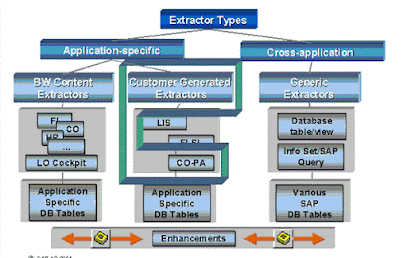Streamlining Data Extraction with SAP: The Ultimate Guide"
In today's fast-paced business environment, it's crucial to have access to accurate and up-to-date information. This is where SAP comes in - a popular enterprise resource planning (ERP) software used by organizations around the world. SAP stores a wealth of data, including financial information, sales and customer data, and supply chain data. This data can be extremely valuable for organizations, but it's often difficult to extract it in a meaningful and usable format.
That's where the process of SAP data extraction comes in. SAP data extraction refers to the process of extracting
data from SAP systems and transforming it into a format that can be easily
analyzed and used for business purposes. With SAP data extraction,
organizations can extract the data they need from SAP systems and use it to
make informed decisions, improve processes, and increase efficiency.
There are several methods for extracting SAP data, including direct database access, application programming interfaces (APIs), and SAP-specific tools. The method you choose will depend on your specific needs and requirements. For example, direct database access is a simple and straightforward method, but it can be time-consuming and may not provide the level of security that some organizations require. On the other hand, APIs can provide faster and more secure data extraction, but they may require a higher level of technical knowledge and skill. SAP-specific tools, such as SAP Data Services, can provide a more streamlined and efficient data extraction process, but they can also be more expensive and complex to use.
It's important to note that SAP data extraction can be a complex process, and it's recommended that organizations work with experienced professionals to ensure that the data extraction process is completed successfully. These professionals can help to identify the best method for extracting SAP data, and they can also provide guidance and support throughout the process.
Another important consideration is data security. SAP systems store sensitive and confidential information, and it's crucial to ensure that this information is protected during the data extraction process. To ensure data security, organizations should implement strict access controls, encrypt sensitive data, and use secure data transfer protocols.
Once the data has been extracted from SAP systems, it can be transformed and loaded into a data warehouse or another data storage system for analysis. This allows organizations to access and analyze the data in real-time, providing them with the insights they need to make informed decisions and drive business growth.
In conclusion, SAP data extraction can be a
valuable process for organizations looking to extract the data they need from
SAP systems. With the right approach and support, organizations can streamline
their data extraction process and gain access to the valuable insights they
need to drive business growth and improve efficiency. Whether you're working
with direct database access, APIs, or SAP-specific tools, it's crucial to work
with experienced professionals and ensure that data security is a top priority
throughout the process.




Comments
Post a Comment